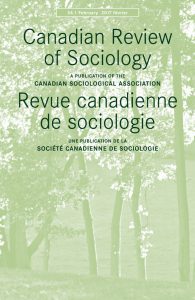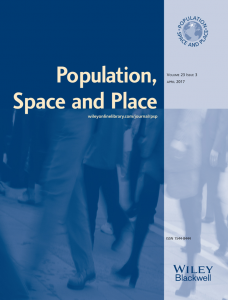Nepal Earthquake: How to Help and Lessons from Other Disasters

Most people with access to a news sources probably have heard, Nepal recently experienced a devastating earthquake. Over 5,000 people have died, over 10,000 injured, and hundreds of thousands of people displaced.
As a Nepalese expatriate in the United States, unable to go home at the time of the disaster, I wanted to write this post about how we can help from afar. Since there are so many organizations and websites soliciting aid – and some are doing great work while others might be more deceptive – it is essential to be cautious in your contributions. In other words, please direct your kind generosity to a reliable platform that ensures that your help directly reaches the poorest and most displaced populations of Nepal. It’s easy to find lists of reliable organizations with a little research: here’s one.
While there is always temptation to be eager to help in a timely fashion, it is also important to survey the problems and needs beforehand in order to ensure that your efforts are fruitful. Items like blankets and clothing are difficult to transport and less likely to reach the poorest populations outside of the capital. Dry, non-perishable food items, iodine and chlroine tables for water purification, batteries, torchlights, are all good items to send. According to Dr. Nisha Agrawal, CEO of Oxfam, India Tents, food, water, sanitation and medicines are five big requirements at the moment.
Don’t go to Nepal, give to Nepal. The Nepalese government is currently struggling to dispatch a lot of relief workers; their organizational skills are lacking and Nepal is in no way prepared for the aftermaths of such an emergency. Therefore, rather than helpful bodies, donations of money to reputable organizations and donations of essential supplies are the best way to support Nepal.
It is also essential to be aware of short and long term structural ramifications of such a disaster. The following section on lessons from previous disasters is authored by Bhinnata Piya:
- Mother Nature discriminates.
- Research suggests that while physiological differences between men and women have implications on disaster vulnerability, social norms in certain South Asian countries such as dress code (sari), behavioural restrictions (not leaving home without husband’s permission) and preference for male sons (choosing sons over daughters during rescue efforts because of their ability to carry the family line) place women at a greater disadvantage in the event of natural disasters. Neumayer and Plumper’s analysis of disaster and socioeconomic status of women from 1981 to 2002 effectively highlights this issue by showing that women are more likely to be killed by natural disasters and their long-term impacts compared to men.
- 24.8% of the total population in Nepal live below the international poverty line of $1.25/day. According to the country’s 2011 National Population and Housing census, less than 10% of the total number of households lived in houses with pillars made of Reinforced Cement Concrete (RCC). This proportion further decreased to 5.5% and 8.9% in Gorkha and Lamjung respectively where over 90% of the buildings have been destroyed in the 2015 earthquake. Not only did the inability to afford quality housing increase low-income families’ vulnerability to the earthquake, but their low literacy rate may also have adversely affected their perception of risks and disaster management leading to a high level of unpreparedness.
- Disaster can also perpetuate other forms of inequality.
- Dalits, previously known as the “untouchables,” have been systematically discriminated against during disaster relief efforts, further perpetuating caste-based inequalities in many South Asian countries. Although there is very little data on this issue, according to the Pakistan Dalit Solidarity Network, many Dalits were not given access to relief camps after the 2010 flooding. Dalits in Sri Lanka faced a similar problem during tsunami relief efforts, where they were excluded in the rationing of food and water.
- According to a qualitative analysis of gender-based violence and rape in an internally displaced persons (IDP) camp in Port au Prince after the 2010 Haiti earthquake, most women reported being raped by at least two men within the first five months of the earthquake. These rape survivors, who were already marginalized due to their socio-economic status, were compelled to live under unsafe conditions, exposing them to rapes that occurred mostly at night both inside and outside the IDP camps. In addition to mental trauma, these women had to face the risks of HIV/AIDS, pregnancy and unsafe abortions, placing them in a worse off position than they were before the 2010 earthquake.
- There is no silver bullet, but context is key.
- So what have we learned from the plight of the earthquake victims from the 1976 Guatemala earthquake to the 2010 Haiti earthquake? We learn that there is no silver bullet, and major disasters will not provide a single solution for an upcoming one unless local governments and community members work together and contextualize the problem. Haiti may teach us about the risks of gender violence in IDP camps, but it tells us very little about Dalits, who may experience discrimination in a very different manner in regions such as India, Pakistan or Nepal. Similarly, the dress code and behavioural restrictions that women face in Bangladesh may not necessarily apply to women in countries such as the United States, where the high mortality rate of women during natural disasters may not necessarily hold true.
- Moving forward, it is crucial for governments to thoroughly revise their disaster management protocols in order to fit the needs of the vulnerable populations. For instance, the National Disaster Response Framework developed by the Government of Nepal defines vulnerable groups as “children under 5 and pregnant/lactating women,” and makes no note of other marginalized groups such as Dalits and the LGBT populations. In addition to making a toxic assumption that Nepal has a stable political system, the framework also fails to acknowledge the existing disparities. While it is a task that requires tremendous amount of work and commitment, it could be truly used to reduce inequality through effective disaster management instead of widening the gap between the haves and the have nots.
Bhinnata Piya is a David Satcher Scholar at Vanderbilt University and is currently pursuing a Master of Public Health degree in the Global Health track. She has previously worked in rural Nepal with Possible, a global health non-profit organization. She visited Haiti in a service trip after the 2010 earthquake.
Please consider donating to this fundraising campaign.





1475-682X/asset/akdkey.jpg?v=1&s=eef6c6a27a6d15977bc8f9cc0c7bc7fbe54a32de)
1540-6237/asset/SSSA_Logo-RGB.jpg?v=1&s=c337bd297fd542da89c4e342754f2e91c5d6302e)